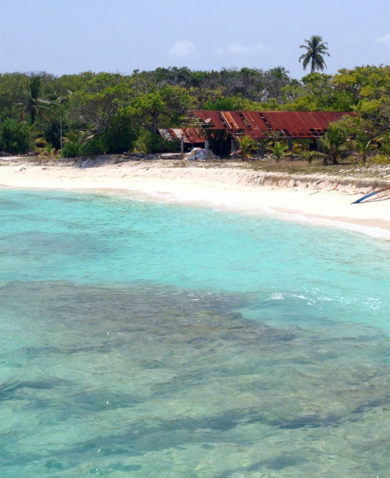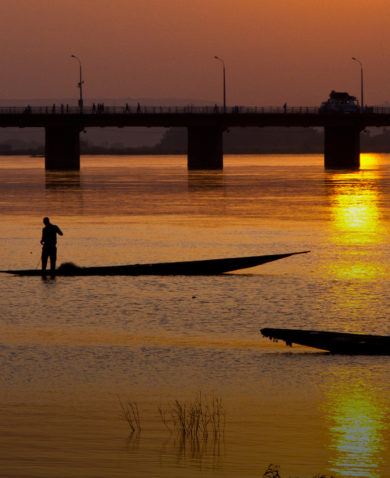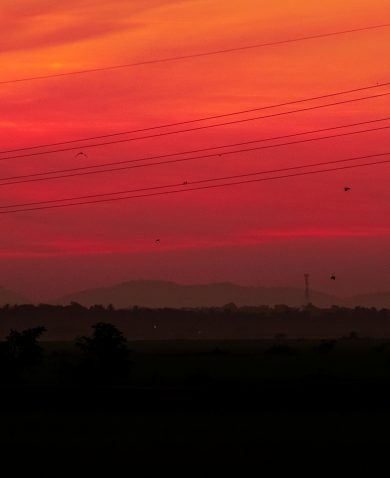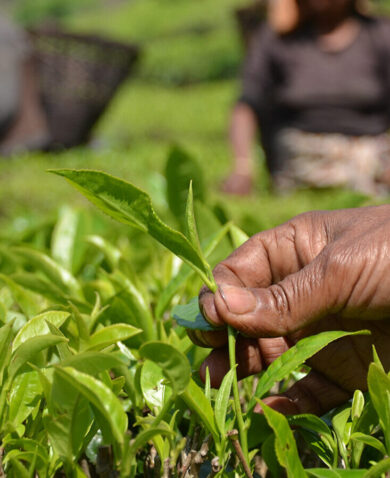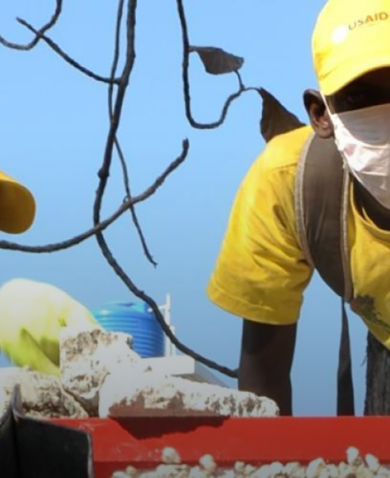
3 Questions with Maria Olanda Bata: Withstanding Storms in Mozambique
June 15, 2017 | 4 Minute ReadMaria Olanda Bata discusses making coastal cities more resilient to storms.
What are the biggest risks if cities in Mozambique do not become more resilient?
It would be a catastrophe. Right now, we’re starting to see the impact of extreme climate events, and we know they will get worse. Even minor-seeming weather events can cause significant problems. For example, it rained lot in the city of Pemba in 2015 and the city stopped functioning completely. A bridge collapsed, streets shut down, and there were mudslides that destroyed houses. Flights were cancelled and the city had difficulty providing clean water. The area of Mozambique in which we work is also prone to cyclones, which have been increasing in intensity. A recent cyclone in March was a category 3, and scientific evidence shows that this kind of extreme weather will become more frequent and intense over time. It’s time for us to be prepared to live with these kinds of extreme events because they’re here to stay. If we don’t adapt, we may see much more serious effects.
Making cities more resilient can involve a trade-off between the desire to plan for long-term adaptation and the need to focus on more immediate threats. How have you navigated that trade-off?
The nature of this work is two-fold, and there are competing priorities. It’s true that adaptation necessitates long-term interventions, but communities also have immediate needs in terms of survival. For example, it’s difficult to tell a person that he cannot build his house in a zone that’s at risk for flooding, but if he’s already had to move from a war-affected zone and this is where he was able to build his house, it may not be easy for him to relocate.
It’s important to understand the poverty level in the area — we’re working with very poor people in an economy that isn’t as stable as one would hope. For example, we encourage mangrove restoration because it prevents erosion, but people cut down mangroves for fuel. The project can run an education campaign to inform the community of the benefits of conserving mangroves but unless I present an alternative to people, the education campaign won’t be effective.
In some cases, though, we are able to respond to these immediate problems in addition to long-term issues. For example, CCAP equips communities to respond to emergencies as a risk reduction intervention. We’ve helped communities establish local disaster committees, which are on the ground and can organize the community when a disaster strikes, and we’ve partnered with the Red Cross to train volunteers as first responders. We also provided them with disaster preparedness kits that have warning flags, stretchers, shovels, flashlights, and other useful tools.
Despite these challenges, the mindset of the municipalities we work with is organized around long-term impact. I admire these municipal decision-makers because they have both the vision for long-term change but can also recognize where their city is at now. The mayor of Pemba remarked recently that some simple changes can make a big difference in the long term, like organizing city zoning through the cadaster with risk reduction in mind. It’s not a huge investment, but vulnerability mapping is a tool they didn’t have before that has now resulted in new practices. Just bringing knowledge combined with tools that aren’t very expensive can make a positive impact.
One pressing issue in Mozambique and many other countries around the world is that infrastructure is not built to stand up to natural disasters. What role can development projects play in encouraging better housing construction?
We are working with UN-Habitat to improve resilient housing in Mozambique, and the model has the potential to be scaled up. We started with an assessment of the types of housing infrastructure that exist in the cities of Pemba and Quelimane, which revealed construction deficits in terms of sturdiness. After the assessment, we worked with UN-Habitat, the municipality, and the local community to come up with a design prototype through a stakeholder consultation process. We prototyped designs for one-bedroom, two-bedroom, and three-bedroom homes, and the designs specify how to place the roof, tie the poles, and build the platform so that the house is sturdy, and also incorporate a rainwater harvesting system and adequate sanitation facilities. The materials used are locally available. The design is a bit more expensive to construct than a standard house, but it’s worth it in the long run. Because the resilient house is sturdier, families won’t have to invest each year to put on a new roof because their house is less likely to be damaged by a cyclone or high winds.
The prototypes were accepted by all parties involved, and UN-Habitat and CCAP have trained local master builders to take the lead on construction. As the next step, we plan to work with UN-Habitat to develop manuals and instructional videos to share with a larger audience beyond Pemba and Quelimane. CCAP was designed to test and evaluate techniques in Pemba and Quelimane with the goal of expanding to other cities, and that’s what we plan to do with resilient housing. We’ll work with the Ministry of Public Works, Housing and Water Resources and the Fundo Para o Fomento de Habitação (Fund for Housing Development) to help them promote these techniques nationally, and the Ministry of Fisheries has already approached CCAP and expressed interest in constructing similar houses for fishing communities along coastal districts in northern Mozambique.
Read more about the Mozambique Coastal Cities Adaptation Project (CCAP).









